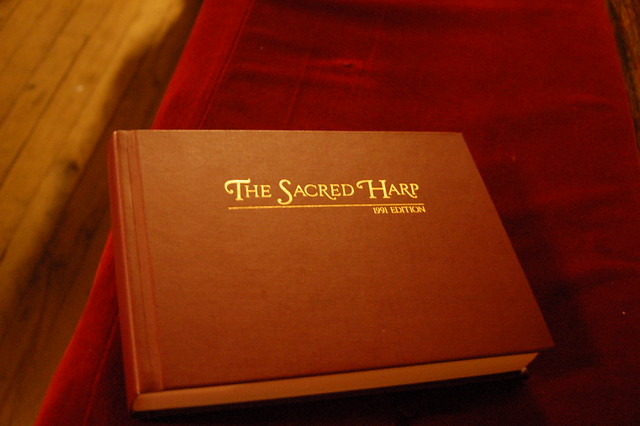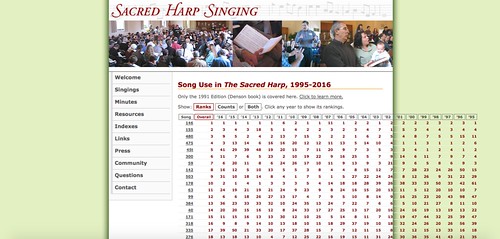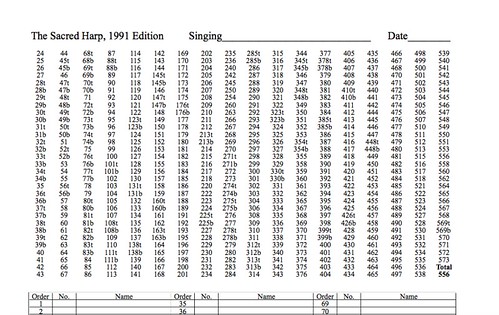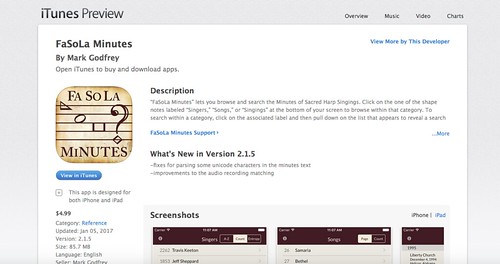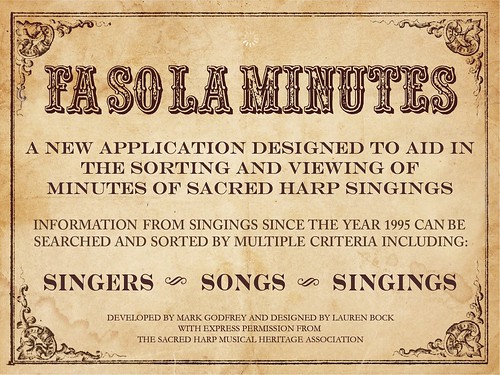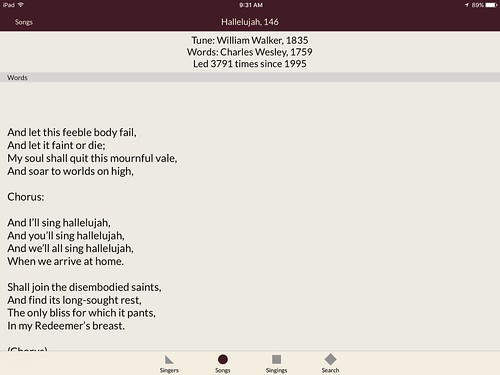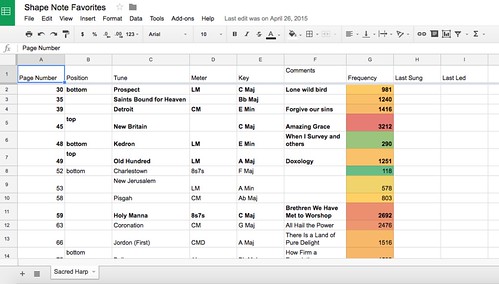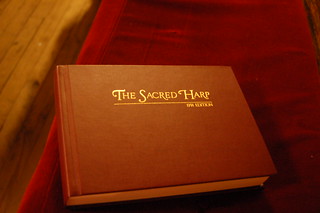NOTE: I started writing this post a couple of years ago and for whatever reason never finished it. After this past weekend’s William Walker Singing I decided it was time to dig it back out.
After my disasterous attempts at leading a couple of songs at the Sacred Harp singing at First Christian Church last Friday (back in 2015, when I first started this post) I decided that I needed to familiarize myself a bit more with the material. I put together a method for studying, and came up with a simple, mobile solution for having my favorite tunes on hand. In the process, I also stumbled on a community obsessed with record-keeping, more so than just about any obsessive sports fan I’ve ever encountered.
My fellow singers knew the book. They knew their favorite tunes, and could pick them out quickly. I think back to when I was a music director working with one hymnal on a regular basis. If someone called out a number, chances were I knew exactly which one it was. If I didn’t know the exact hymn, then at least I had a rough idea of the subject matter because of its location within the hymnal.
That familiarity comes from constant use, and I just don’t attend that many singings. I needed a different solution. I turned to technology, which I thought would be completely anathema to the concept of Shape Note. Boy, was I wrong.
I started old school. Beginning with The Sacred Harp, I went page-by-page humming the tunes and scanning the texts. Using a fountain pen (just because I like the way it writes) and a legal pad, I made note of the ones with which I was familiar. I also made note of those I liked, but may not have been familiar. Any of these would work if I were called upon to lead. I jotted down any other pertinent information, such as page number, tune name, meter, key, and any comments such as text first lines. No electrons were harmed during this process.
As I made my notes I began to wonder how popular some of these tunes might be. Just because a song might be a popular hymn doesn’t mean that it would be a popular shape note tune. Also, I found that some texts are used for multiple songs. For example, “Come Thou Fount of Every Blessing” and “On Jordan’s Stormy Banks I Stand” are used several times throughout the collection. Which were the most popular?
I remembered that detailed records are kept of most of the singings. The minutes for each event are posted on the FaSoLa organization website at fasola.org. I wondered if that might give me some guidance. Here is where I found the most amazing amount of statistical data.
The minutes page contains detailed information about every organized singing dating back to 1995. This includes singers’ names, what songs were song, and who led that song. My name even appears in there, on the rare occasions when I’ve led a song. Of course, with a name as common as mine, there were several other “Tom Taylor”s that appeared on the list.
The statistics page was even more amazing (even if it didn’t quite fit on the screen.) The data was only for the 1991 Denson edition of The Sacred Harp. Other books are used at other singings, but since there is so much overlap, even a single book helps, and is still probably more overwhelming than one might want.
The page ranks each song according to the number of times it has been sung. There is an overall rank, as well as rankings per year. Apparently the number one song is #146 Hallelujah, by William Walker. I think that’s the song with which we began last Saturday’s singing.
Someone had created handy Hymn Tracking Sheets in PDF format for both Denson and Cooper versions of The Sacred Harp. You could mark through the numbers that had been sung like a bingo sheet, and there was a space to record the order and leaders. I might want to try this at the next singing I attend.
These weren’t the only resources available. In addition to multiple links to other online resources, there is an app version of the Fasola minutes and stats.
I downloaded the app and found that it had the same data as the website. It didn’t have the stats as nicely organized, but when you clicked on a song it listed its overall stats at the top of the page.
All this information was nice, but a bit overwhelming. How was this going to help me select a song when called upon to lead? I needed to develop my own method based on the songs with which I was familiar. Once again, technology came to my rescue.
I went back to my handwritten notes from the Sacred Harp. First, though, I created a spreadsheet in Google Docs. I entered all of the songs from my handwritten list, including composer, meter, and other pertinent information, as well as room for my comments. The last column was the number of times the song had been sung according to the Fasola stats.
If the song was one that I liked or with which I was familiar I tagged it in bold. That way I could quickly pick out my favorites. I used conditional formatting to color-code the song frequency. Those sung less often were green, and those more frequently were red. It was interesting to see that some of my favorite songs were not sung very often, which opened up a HUGE opportunity for me as far as leading.
Now I had the data that was pertinent to me in a format where I didn’t have to search the entire book.
Sadly, this data is only for one specific book – the 1991 Denson Sacred Harp. I wanted to do the same thing for the Christian Harmony, but at the time I started this project I didn’t have the updated book. Even though I don’t have the song stats, at least I could list the songs with which I felt comfortable. I may yet do that.
So, how did this work? Well, truth be told I kind of forgot about it for the Walker Singing. Plus, I’d made the decision not to lead, so the point was moot. I did try it at another local singing at First Christian Church back when I first started working on the project, and the results were…so so. I was still not comfortable with leading and hadn’t figured out how to use the data. In a small setting like that, though, you have no choice. Leadership goes around the room and if you back out, it’s kind of awkward.
Even so, I now have a tool that I think will help. I can add tabs to the spreadsheet for the other books as I generate that data. Maybe the next rainy day when I don’t have an outing planned I’ll get to that.
